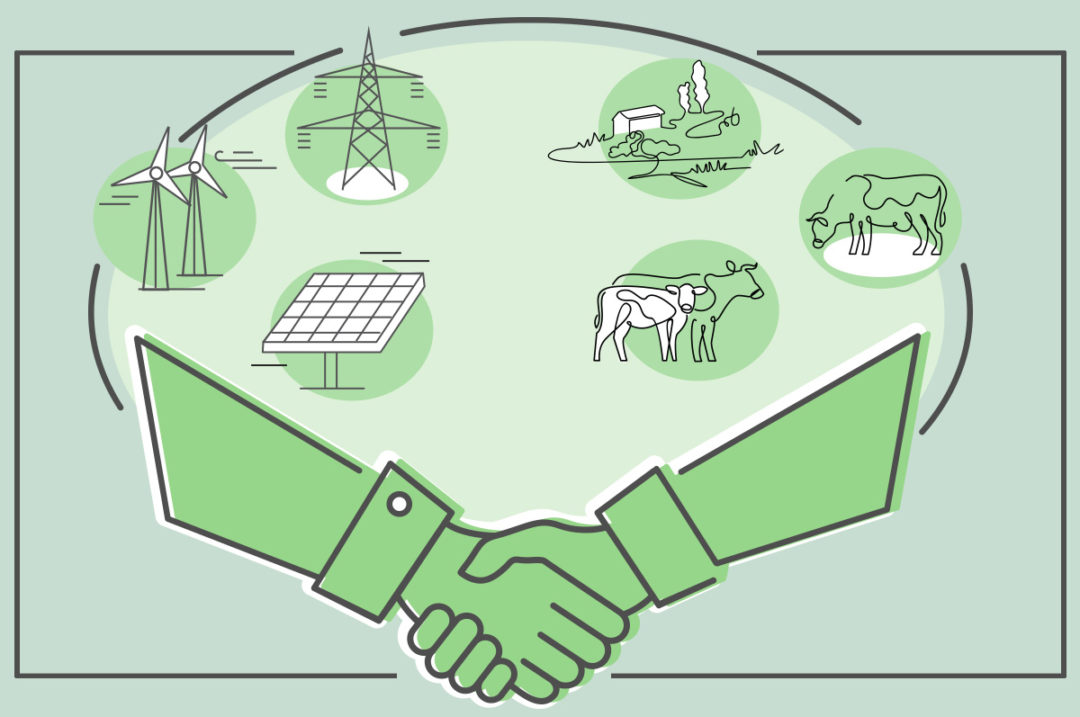Cattle grazing may be a good use of cattle grazing land, but it may not be the only good use. Particularly as nationwide climate goals have driven investment throughout the country in clean electric and carbon offset technologies, cattle graziers may find new market opportunities to make mixed use of cattle grazing land.
These opportunities can be profitable. In the Midwest, for instance, a single cattle grazier who owns the underlying land may be approached with a carbon pipeline easement, an electric transmission line right of way and an agreement to sequester carbon through ecological land management practices. The developers may promise that these activities will operate in concert with the landowner’s underlying cattle grazing.
But if the landowner is not careful, the mixed use may come to predominate over the cattle grazing. That is, an agreement may effectively prohibit the cattle grazing for which the land was initially used. Landowners should take care and consult legal counsel before entering such an agreement. Seven of the most important considerations are below.
- Take your time and negotiate thoroughly. Carbon credit contracts and pipeline easements are generally long-term agreements that may be difficult to terminate. If negotiations have stalled, do not be afraid to end the meeting and resume negotiations later. Your counter-party wants an agreement and generally wants to move quickly. But slow down, and do not gloss over important details.
- Avoid too long of a term. Industry practice varies, but it is important to set a termination date to the agreement. Keep in mind your long-term goals for the land, and plan around those. Some pipeline or carbon credit terms may even reach decades into the future. Consider an earlier termination date, at least for the initial term. This protects you in the event that the relationship simply does not work.
- Get granular about compensation. The listed price does not always represent the ultimate compensation after fees and expenses. Determine who is responsible for transactional, administrative and insurance fees. Specifically for pipelines, have the company repair property such as fences after construction. Understanding the difference between the listed price and expected compensation can allow you to negotiate which fees and expenses each party will cover.
- Be OK with a slow payout. Tempting as a quick payout may be, a slower payout may be better. If demand grows, it is reasonable to expect that use of your land will be worth more and you should receive compensation accordingly. At minimum, negotiate to include a gradual increase in compensation that is in line with anticipated inflation over time. Analyzing the payment structure of the deal will allow you to better plan around payouts and negotiate for a payment structure that meets your expectations.
- Consider your costs. The contract may limit how you use your land, and it is important to weigh the cost of this change against the benefits from the agreement. Think about the time that you will spend showing a contractor or third-party soil sampler around your property. If this is a significant inconvenience to you, negotiate a restriction on when the company may use your land.
- Anticipate the worst. It is important to include terms that outline what action you may take if a pipeline owner misuses its easement, whether it be compensatory or a termination of the easement. Alternatively, if you have a carbon credit agreement, you should determine what recourse you will have if carbon sequestration or soil sampling discontinues. Payments will stop, but some contracts further impose a lien on the property. Negotiate these terms ahead of time.
- Form a working relationship. While it is important to firmly negotiate favorable terms, keep in mind that you may have to deal with the other side for an extended period of time. Be courteous, and stay on good terms.
With these profit opportunities come significant complexity and risk. These contracts, for instance, typically involve land use, environmental permitting, tax issues, easements, intellectual property and technical analyses. Consultants may also be necessary to quantify a company’s emissions and verify the landowner’s additionality. Landowners, project operators, consultants and emitters alike should consult competent legal counsel.







